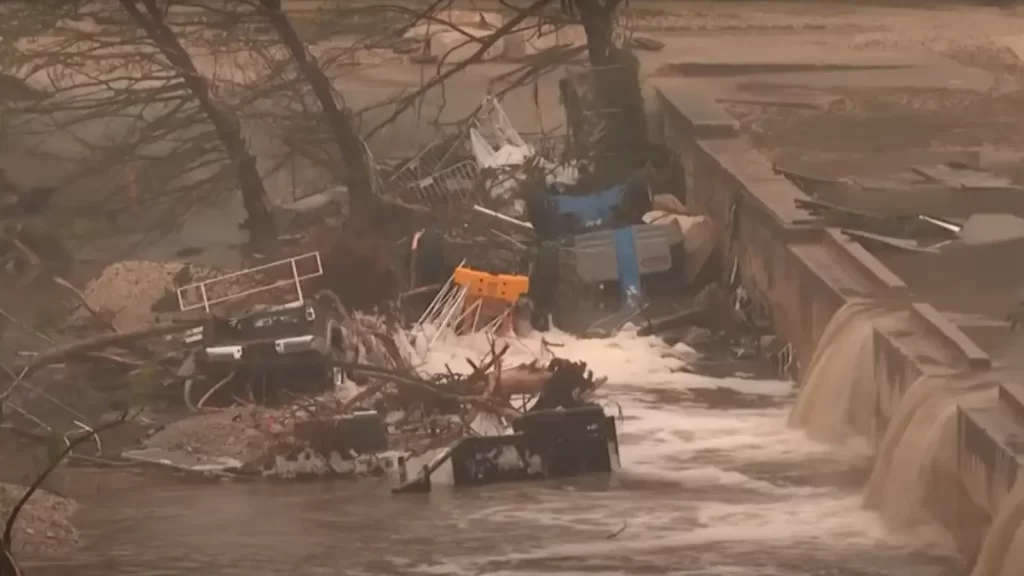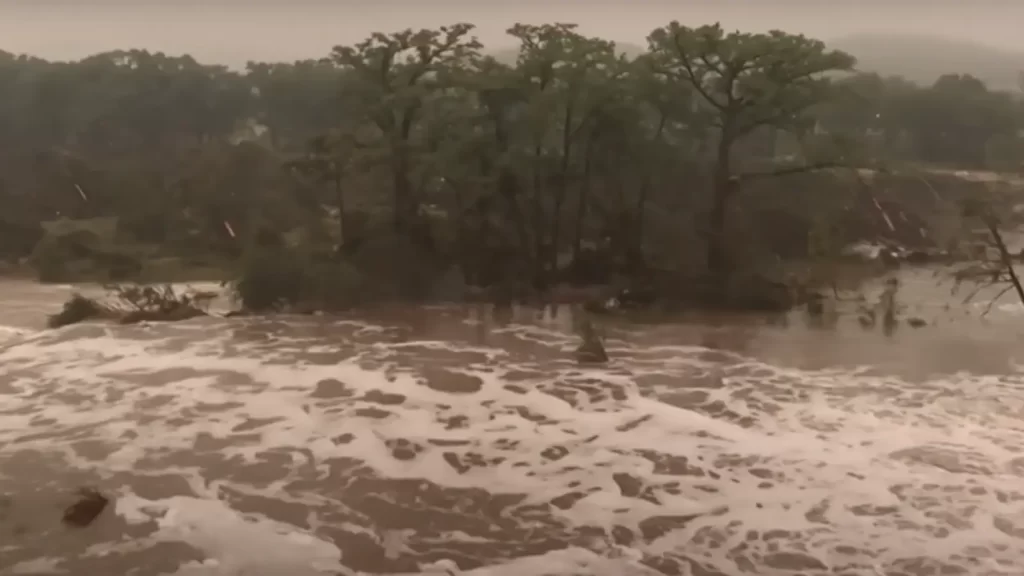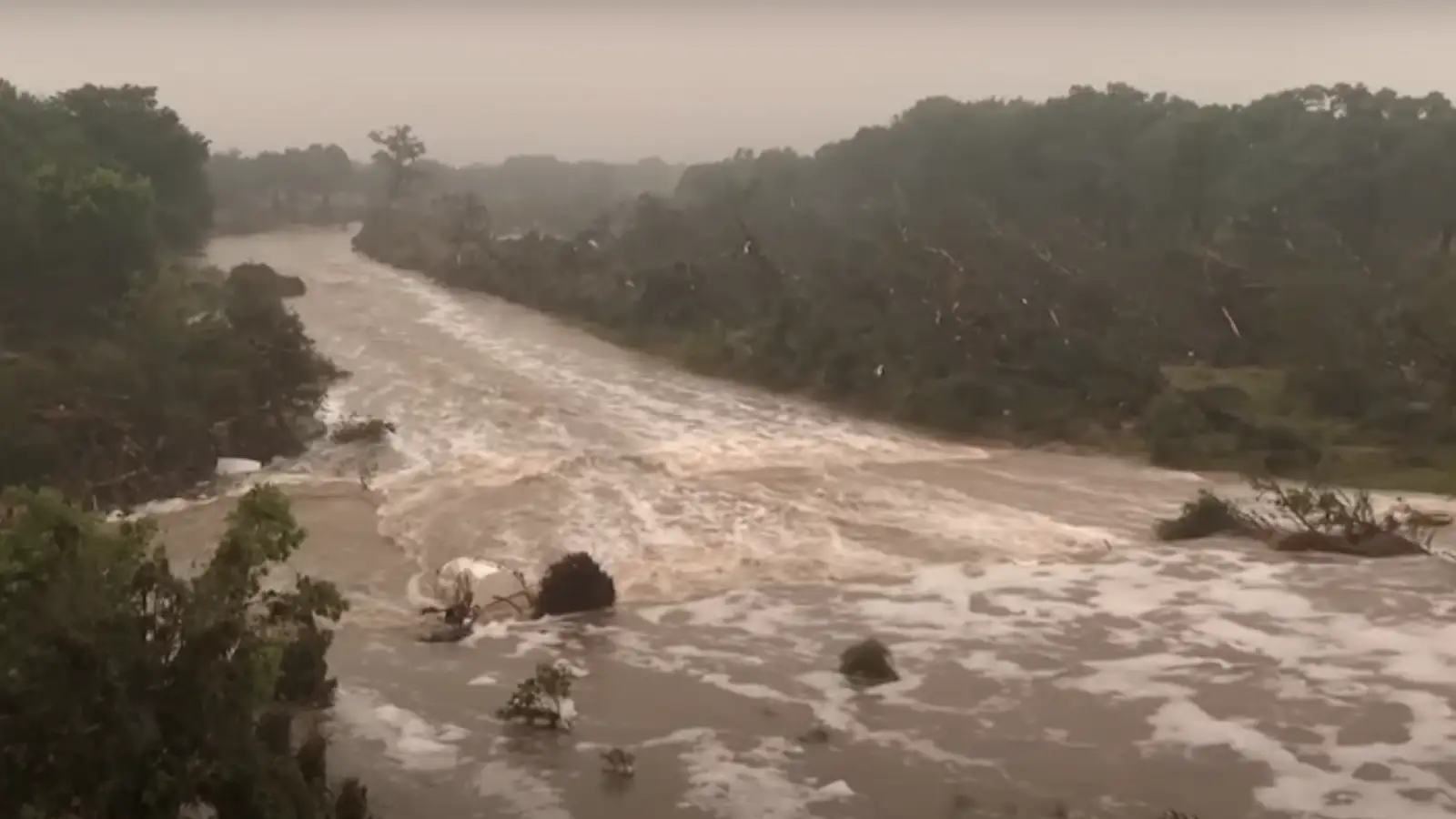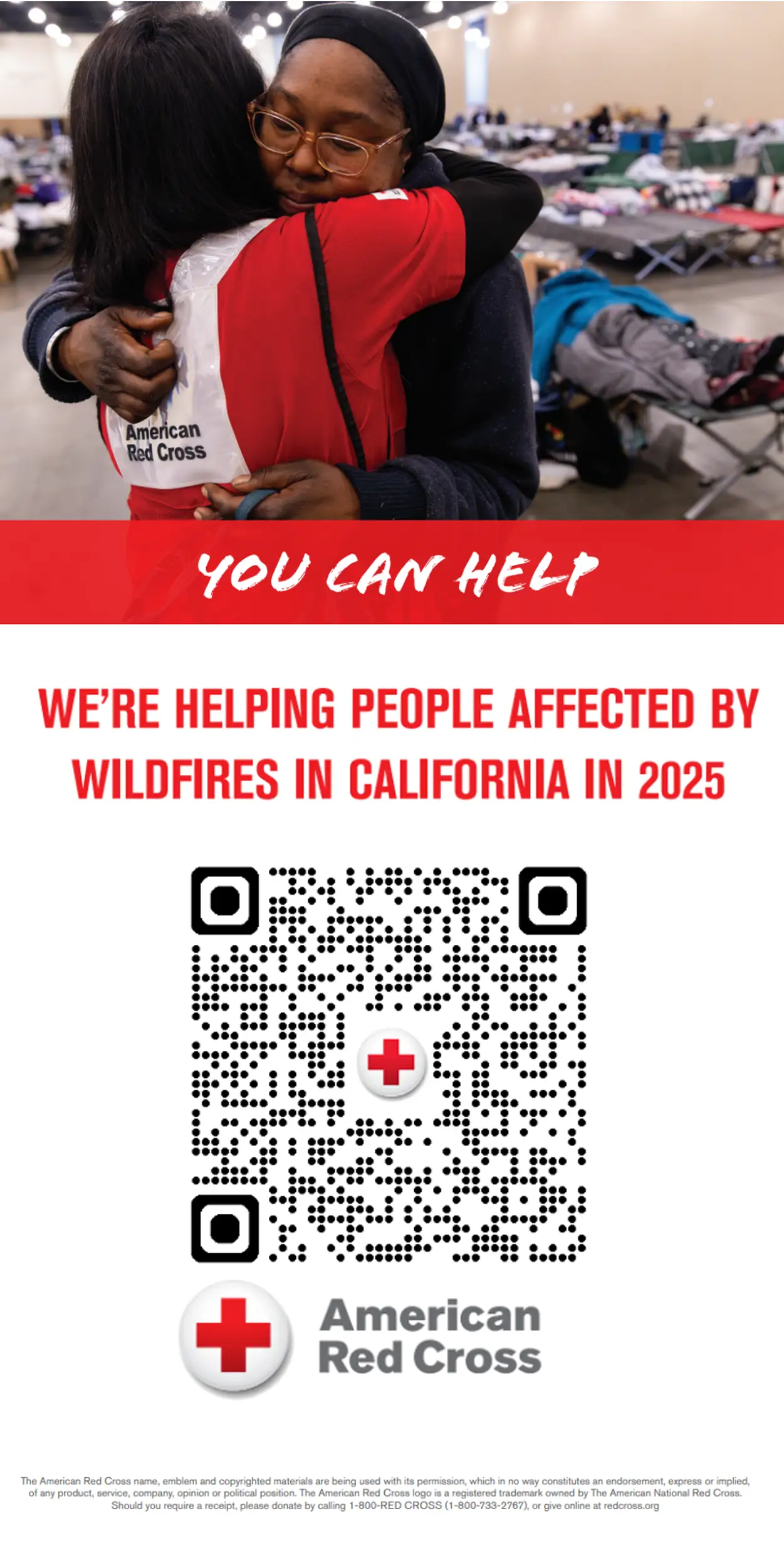What should have been a day of celebration in the United States turned into one of the most devastating natural tragedies in recent Texas history. The heavy rains and flash floods that hit the state in the days leading up to and following the 4th of July left more than 100 people dead and dozens missing, deeply scarring entire communities, especially those in Kerr County.
Why was this flood so lethal?
The geography of Central Texas is already known to be especially vulnerable to flash flooding. The region known as the Flash Flood Alley – which stretches from Dallas through Austin to San Antonio – is prone to receiving torrential rains that, falling on dry, compacted soils, are not easily absorbed. This generates rapid overflow of streams and rivers.
One of the most affected was the Guadalupe River, which in just 45 minutes increased its level by more than eight meters, according to meteorological reports. This phenomenon was fueled by a dangerous combination: the humid and warm air from the Gulf of Mexico, which when ascending the Escarpa de los Balcones – a geological formation of cliffs and hills – generates concentrated and persistent rains. This was compounded by residual moisture from a tropical storm that had passed over the Yucatan Peninsula days earlier.
The result was a kind of “river tsunami”: a wall of water that raged down the Texas valleys, carrying everything in its path.
Failed warnings: could it have been avoided?

One of the toughest questions now floating in the rubble is whether the weather warnings were timely or whether there were human or technological failures that prevented a proper evacuation.
On Wednesday prior to the disaster, the Texas Division of Emergency Management had already activated its protocols for the threat of flooding. By Thursday afternoon, the National Weather Service (NWS) had issued a warning for Kerr County, which included a risk of severe thunderstorms through Friday morning.
But the speed with which the rains intensified and the explosive growth of the river exceeded all forecasts. Governor Greg Abbott justified the collapse by saying that “no one expected a wall of water nearly nine meters high.“
However, local officials acknowledged that there were major failures. Kerr County Judge Rob Kelly confessed that years ago there was consideration of installing a warning siren system like those used in the event of tornadoes, but it was never implemented for budgetary reasons.
In addition, many affected areas lack good cellular coverage, so many residents never received the alerts issued by text message.
“We know questions are being asked about the notification system, and while this is not the time to speculate, we are committed to doing a thorough review,” said Kerrville municipal spokesman Dalton Rice.
Did federal cuts play a role?
Adding to this tragedy is a political debate that has not been slow to emerge. Media outlets such as The New York Times noted that the National Weather Service has faced a reduction in staff since Donald Trump’s return to the White House. According to the NWS employee union, some offices in Texas were operating without hydrologists and meteorologists, key players in assessing risks and issuing timely warnings.
Despite assurances from the Department of Commerce – to which the NWS reports – that the agency continues to fulfill its mission, cutbacks have weakened its response capacity. Unofficial reports indicate that the agency has lost nearly 600 employees in less than two years.
Was this lack of personnel one of the factors that prevented earlier warnings? It is difficult to know for sure, but the questions are already on the table.
The victims: names, faces and pain

The epicenter of the pain was the Christian camp Mystic, in Kerr County, where at least 27 girls and teenagers lost their lives. The center, founded in the 1930s and run by the same family ever since, was swept away by the rising river while the girls slept.
Some, like 13-year-old Stella Thompson, managed to survive because their cabins were on high ground. But others, like Renee Smajastrla, only 8 years old, did not suffer the same fate. Her body was found thanks to the viralization of her photograph on social networks, shared by her uncle.
Sisters Blair and Brooke Harber, aged 13 and 11, were also among the victims. Their father described them as bright, generous girls with infectious joy.
The camp director, Richard “Dick” Eastland, also died, and several monitors are still missing.
Outside the camp, other personal tragedies have also come to light. Julian Ryan, a 27-year-old, bled to death after breaking a window so his family could escape. “He died a hero,” said his sister, Connie.
The search continues
As these lines are being written, rescue teams are not resting. They scour the banks of the Guadalupe River on foot, on horseback, in boats and even with helicopters, under extreme temperatures and among mountains of debris. Many houses marked with an “X” indicate that they have already been inspected. But the rains have not completely stopped, and experts fear that the death toll will continue to rise.
Survivors such as Diana Smith recall their experience with terror: “I woke up and the water was already inside my house. I called 911 but no one came. I got in a kayak with my dogs and escaped”.
Reflection after the disaster
What happened in Texas is not only a natural tragedy, but also a wake-up call. The combination of vulnerable geography, inadequate warning systems, lack of investment and extreme weather events generated by climate change creates a deadly cocktail that can be repeated in the future.
This disaster reminds us that prevention saves lives, and that the price of inaction – whether by policy, budget or lack of foresight – is paid in human stories like those of Brooke, Blair, Renee, Julian and so many others.
At La Revista Binacional, we join in the grief of the families affected by the torrential rains and tragedy in Texas.
We deeply regret the loss of so many lives, especially those of children and young people with dreams to fulfill. We send our heartfelt condolences to those who today face the absence of a loved one, as well as to the communities still searching for answers and comfort.
May solidarity and mutual support be a beacon in these dark days. We are with you.








































Leave a Reply